Tuesday Triage #56
- TUESDAY TRIAGE #56 by Vadim Drobinin
- On scaling up
- Things I enjoyed reading
- 1. Coins, the Overlooked Keys to History by @cncep
- 2. The argument for switching off lights at night by Laura Paddison
- 3. What Happens If You Stick Your Head in a Particle Accelerator? by Joel Frohlich
- 4. Ode to the Ice Man by messynessy
- 5. How The Flakka Drug Epidemic Nearly Drove South Florida To Madness by John Kuroski
- 6. Leap seconds: Causing Bugs Even When They Don't Happen by @PowerDNS_Bert
- 7. How to gain more from your reading by Robert DiYanni
- 8. Technical blogging in the era of Stack Overflow by @ognjenio
- 9. The Twopenny Hangover by Mike Dash
- 10. It looks like a product but is secretly a subscription by Cal Paterson
- Things I didn't know last Tuesday
- 1. Dishwasher salmon
- 2. Beavers build dams to stop the sounds of running water
- 3. Boston Cooler
- 4. Chess boxing
- 5. Potoooooooo
- 6. Scunci
- 7. Passatelli in brodo
- 8. $ ^code1^code2
- 9. Twitterature
- 10. The Inventor of the Black Box Was Told to Drop the Idea
- Book of the week
- Thank you and see you in a week!
TUESDAY TRIAGE #56
by Vadim Drobinin ¶
Your weekly crème de la crème of the Internet is here!
10.08.2021 (read in browser)
-
Intro
Whatever is on my mind this week. -
Things I enjoyed reading
Ten-ish articles I found worth reading. -
Things I didn't know last Tuesday
Ten-ish facts I didn't know when I wrote the previous edition. -
Book of the week
Some thoughts on the latest book I've read.
On scaling up ¶
This week we had some friends over, which is always a great excuse for going full on cooking something that I still can't scale down.
The best option is always to scale up, if in doubt.
We kicked the week off with some mini brioches that Sasha baked:
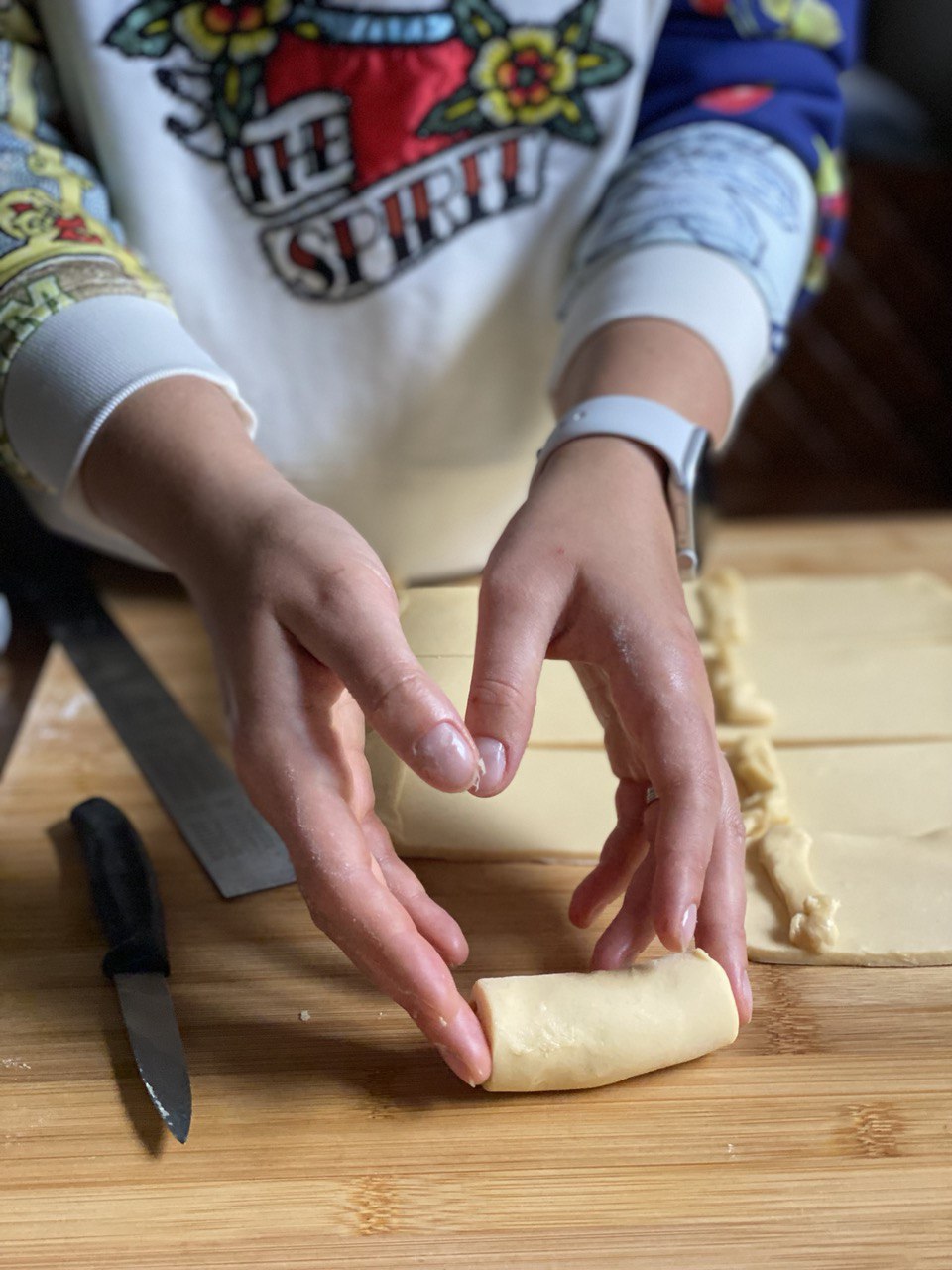
And then served with whipped goat butter and homemade pesto.
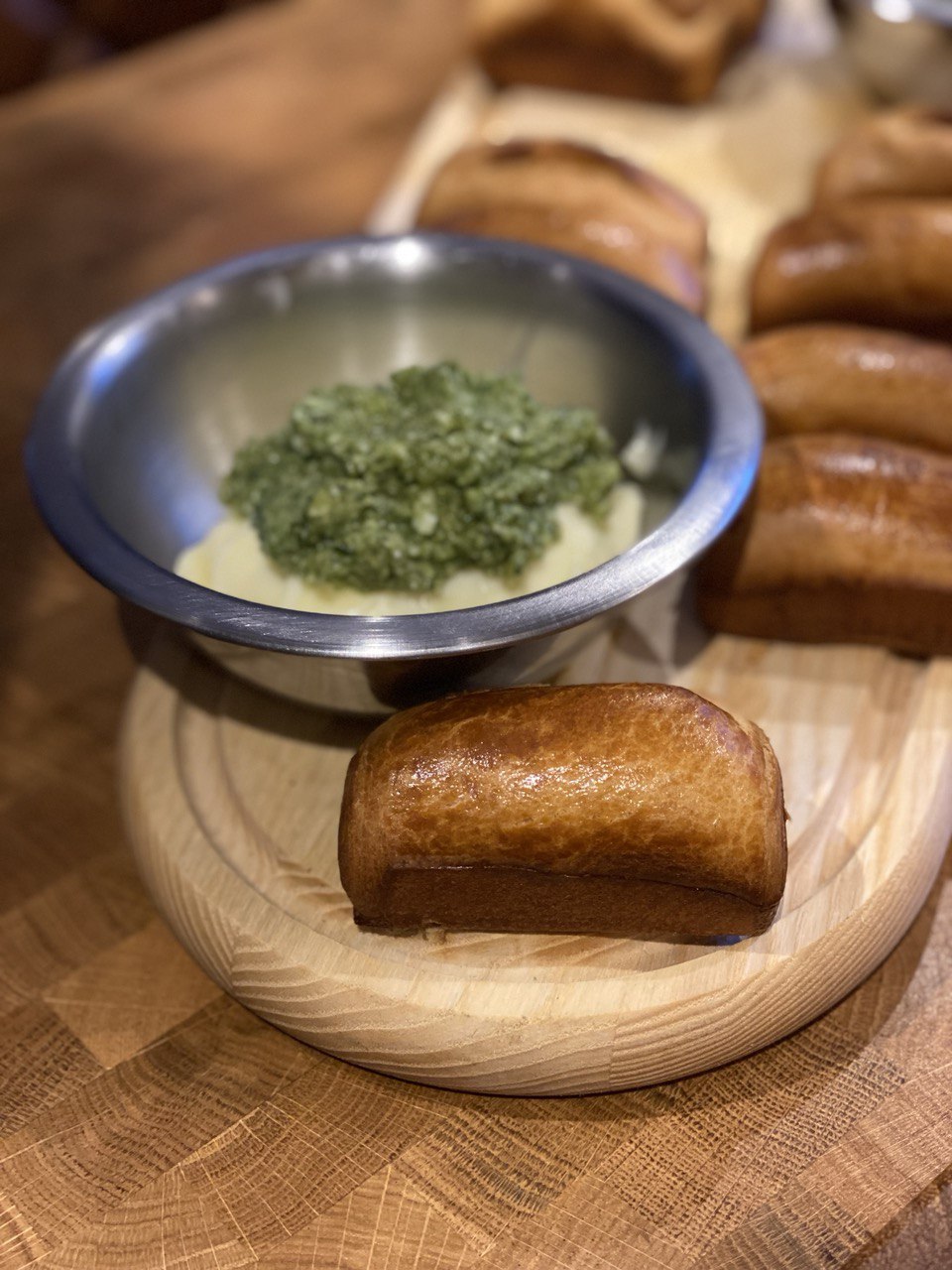
The butter was somewhat inspired by a dish we had at Daniel Humm's restaurant, although the pesto was quite different, and the butter had a slightly stiffer texture. Still worked out quite well.
Another starter (or an amuse-bouche) was an ode to hydrocolloids: it looks like a sunny-side up, just a carefully fried egg, but in fact is almost a dessert made with carrots and coconuts.
The coconut milk is infused with black cardamom and then mixed with gelying agents, so once it is plated it gets almost instantly gelified.
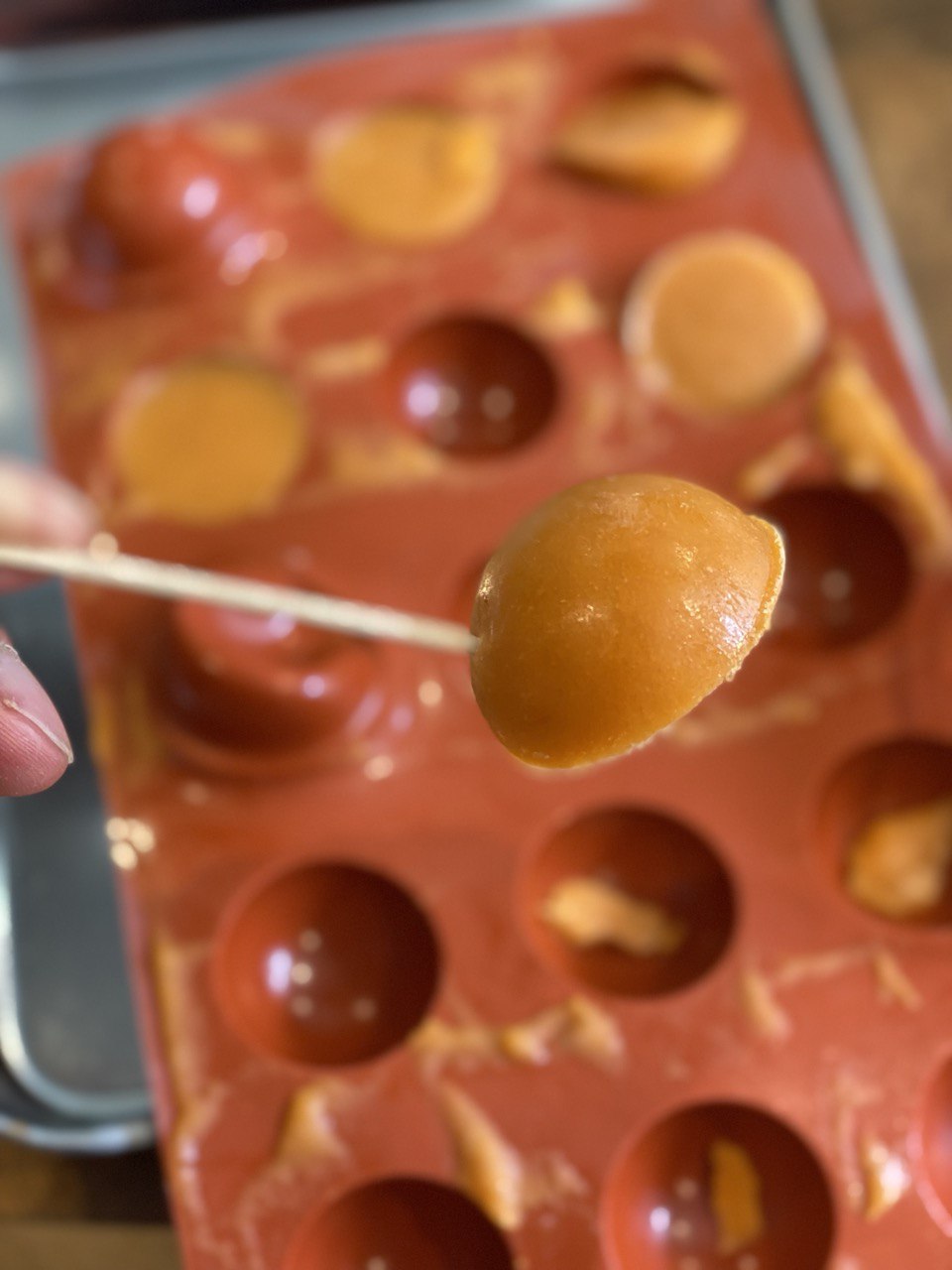
The carrot juice is blended with smoked maple syrup, and then frozen in demisphere molds.
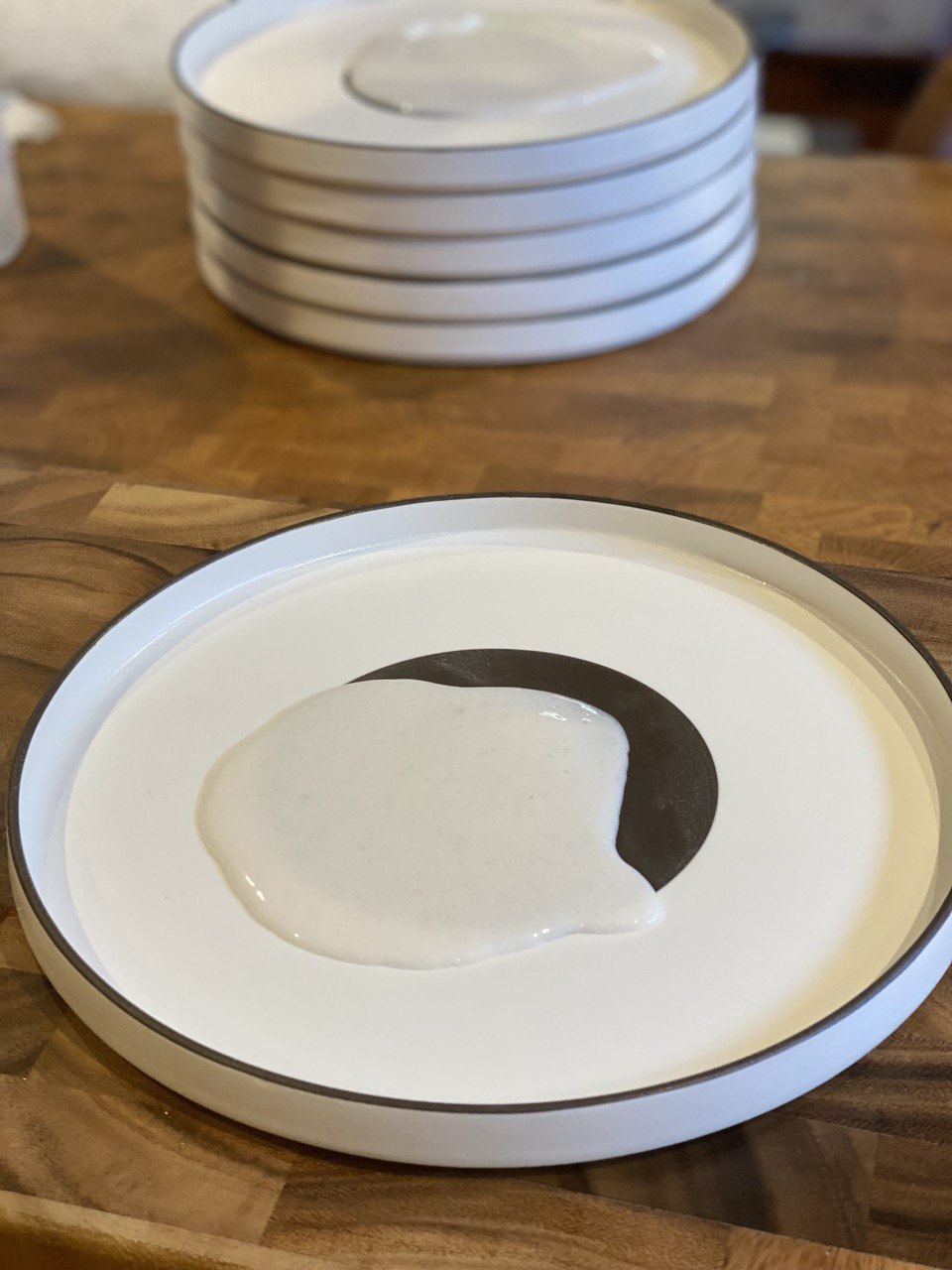
And then dipped into a warm potassium bath that turns the outer layer of the frozen demispheres into a fragile gel that mimics the outer layer of a cooked egg yolk. Once it is thawed fully, the insides are holding shape until cut through.
It is served with black pepper, salt, and a dribble of olive oil, so until tasted it is really hard to tell apart from a real sunny side up. The dish was invented by Wylie Dufresne for his restaurant wd~50 and definitely lives up to its reputation.
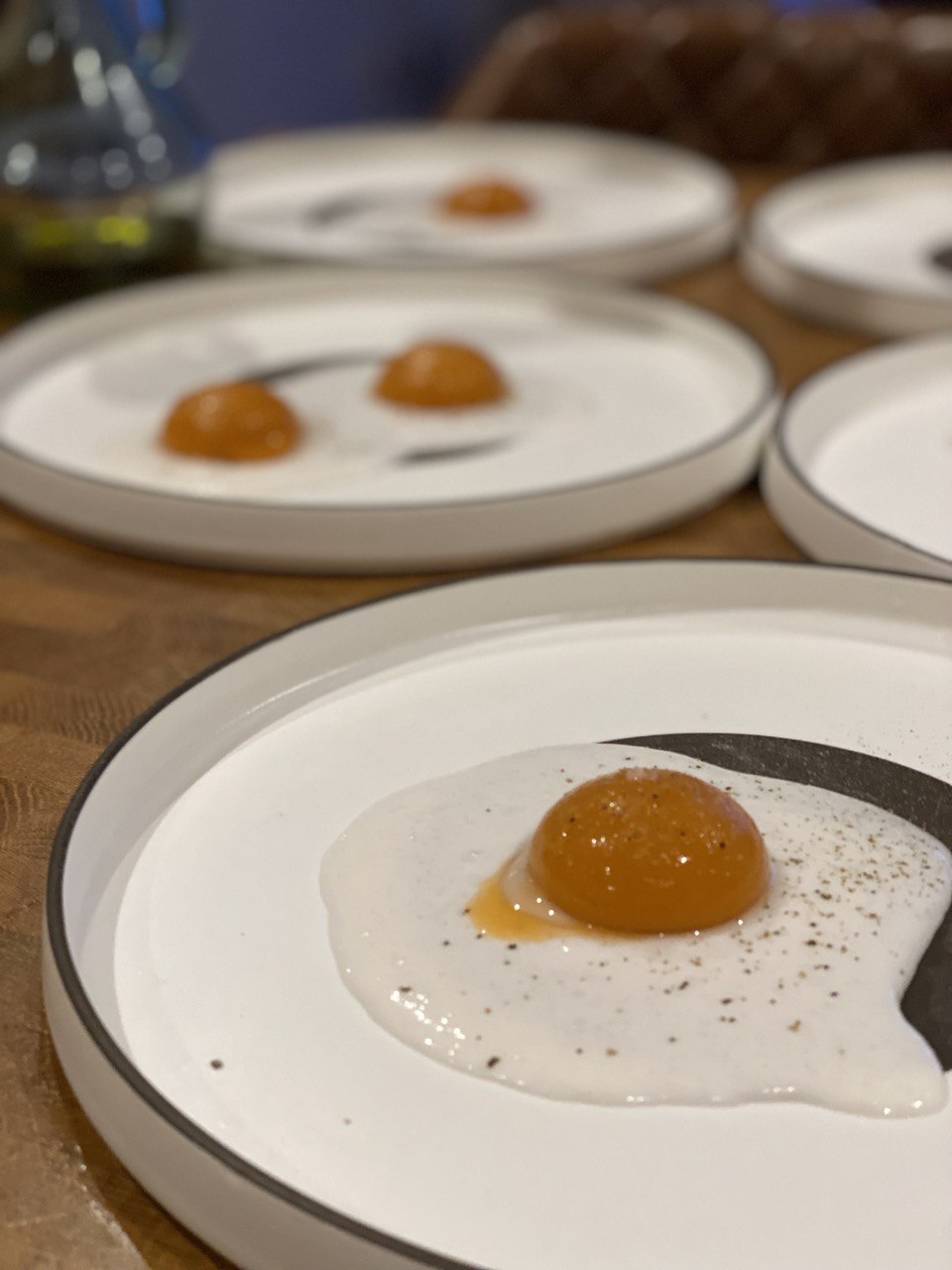
And the pinnacle of the dinner was tagliatelle al ragú based on Massimo Bottura's famous hand-chopped meat ragu, which calls for sausages, ox cheeks, beef tongue, oxtail, and lots of veggies all cooked together in marrow bone fat, and deglazed with white wine to boost acidity.

All meats are then pulled out and chopped by hand, while the rest of the sauce is passed through a food mill.
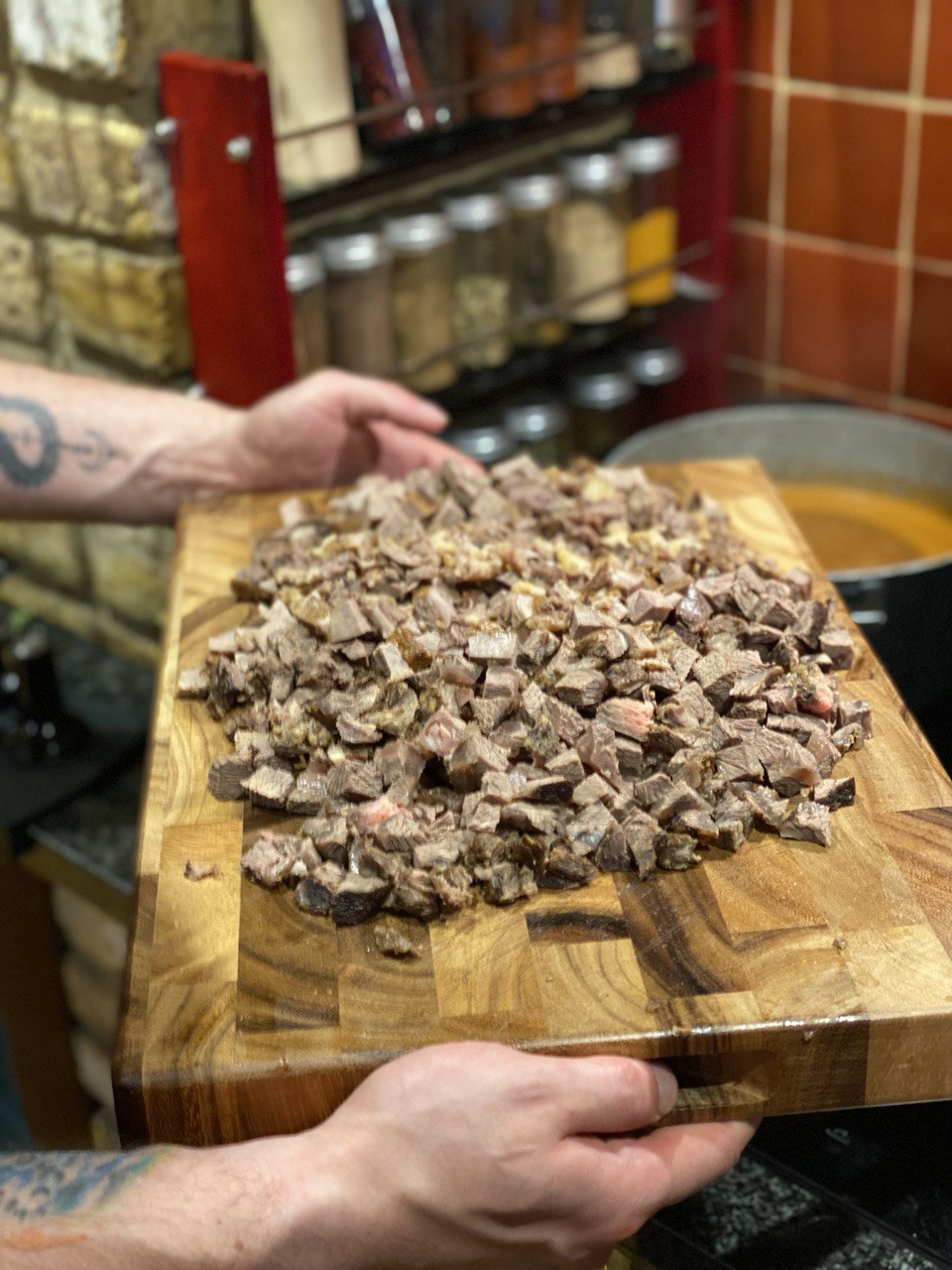
Pasta is obviously hand made and then everything is served all together.
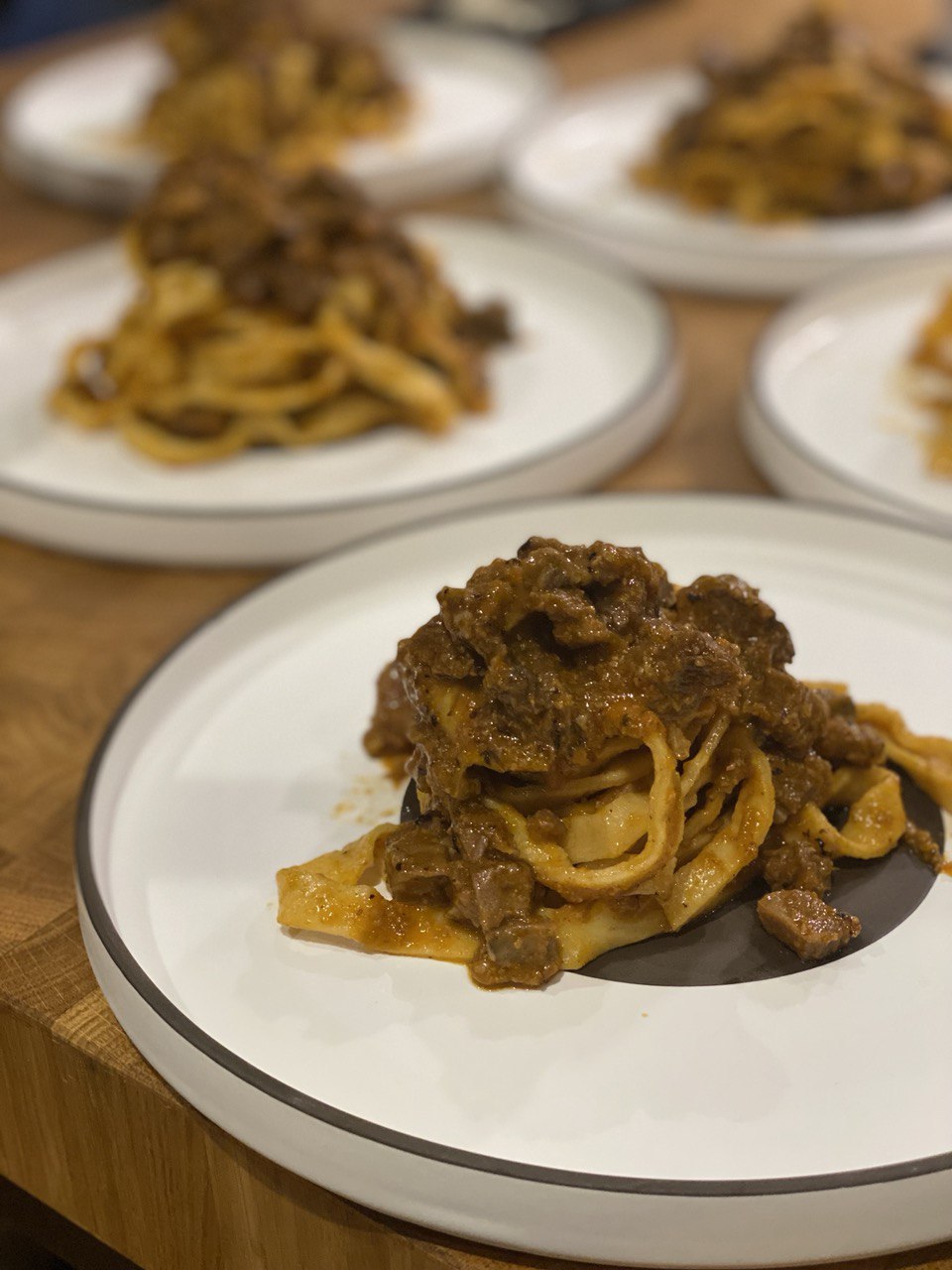
I turned the leftovers into a burger from another 3 Michelin star chef. Some grated truffles are mixed with anchovies, garlic and olive oil, and then poached for some time to make salsa tartufata.
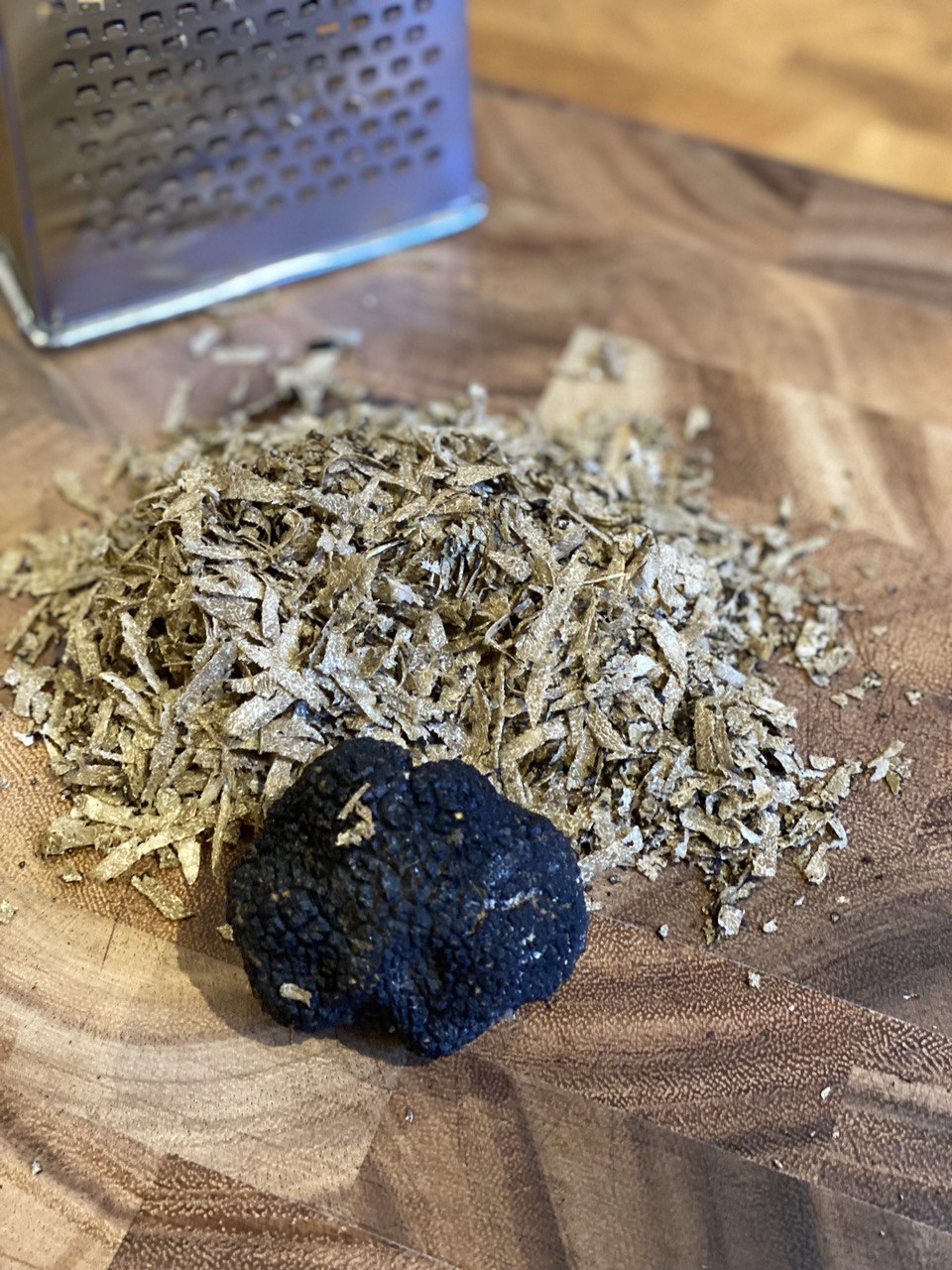
Buns are made out of brioche dough but steamed like bao buns.
The the ragu (as well as some pulled chicken chipotle) are molded and plated on the buns with a sauce (mayo, worcestershire sauce, and homemade fermented hot sauce with blackberries), some lettuce, and topped up with tartufata.
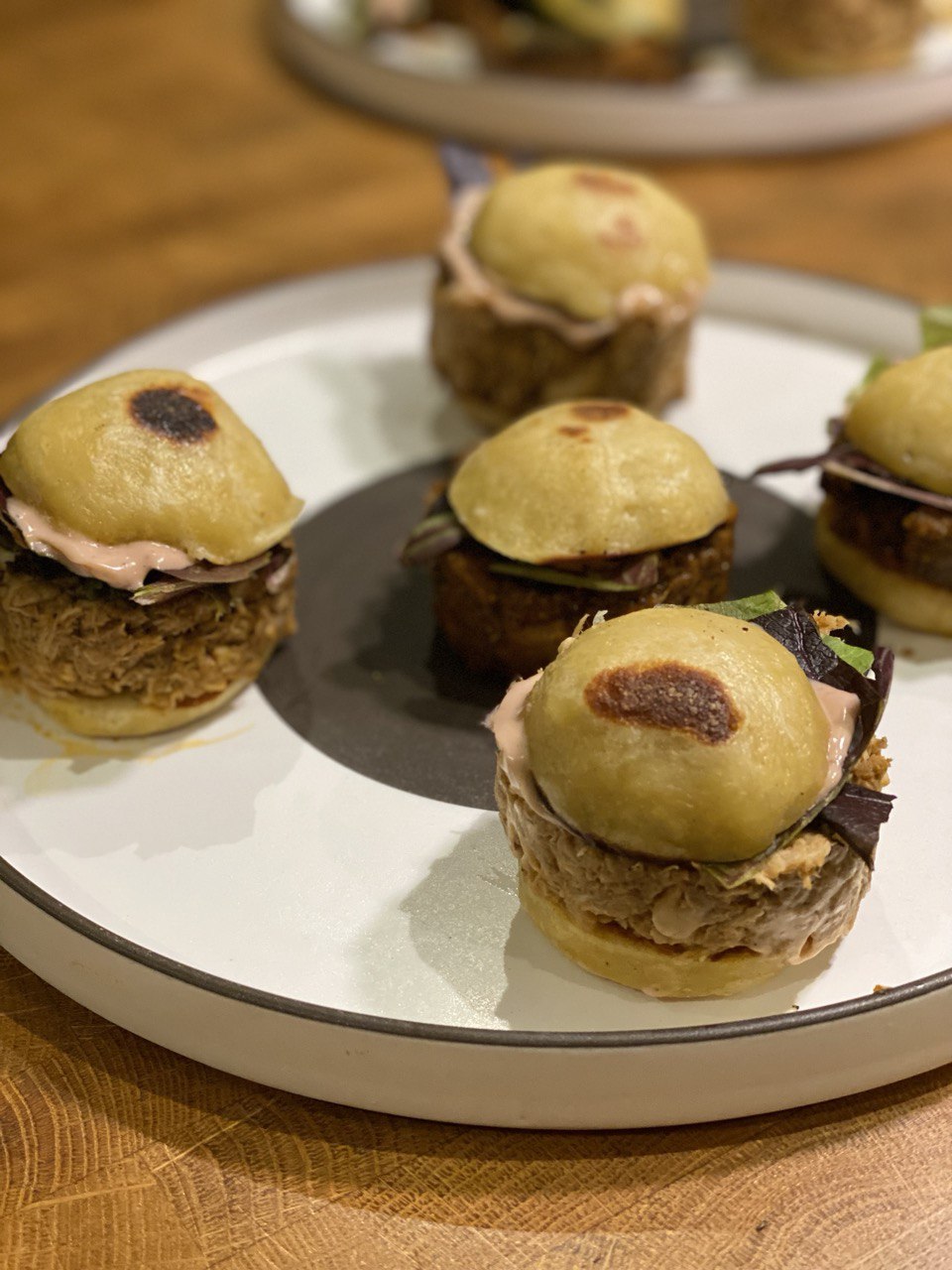
The tartufata leftovers were turned into a quick pasta by Sasha and it was delicious:
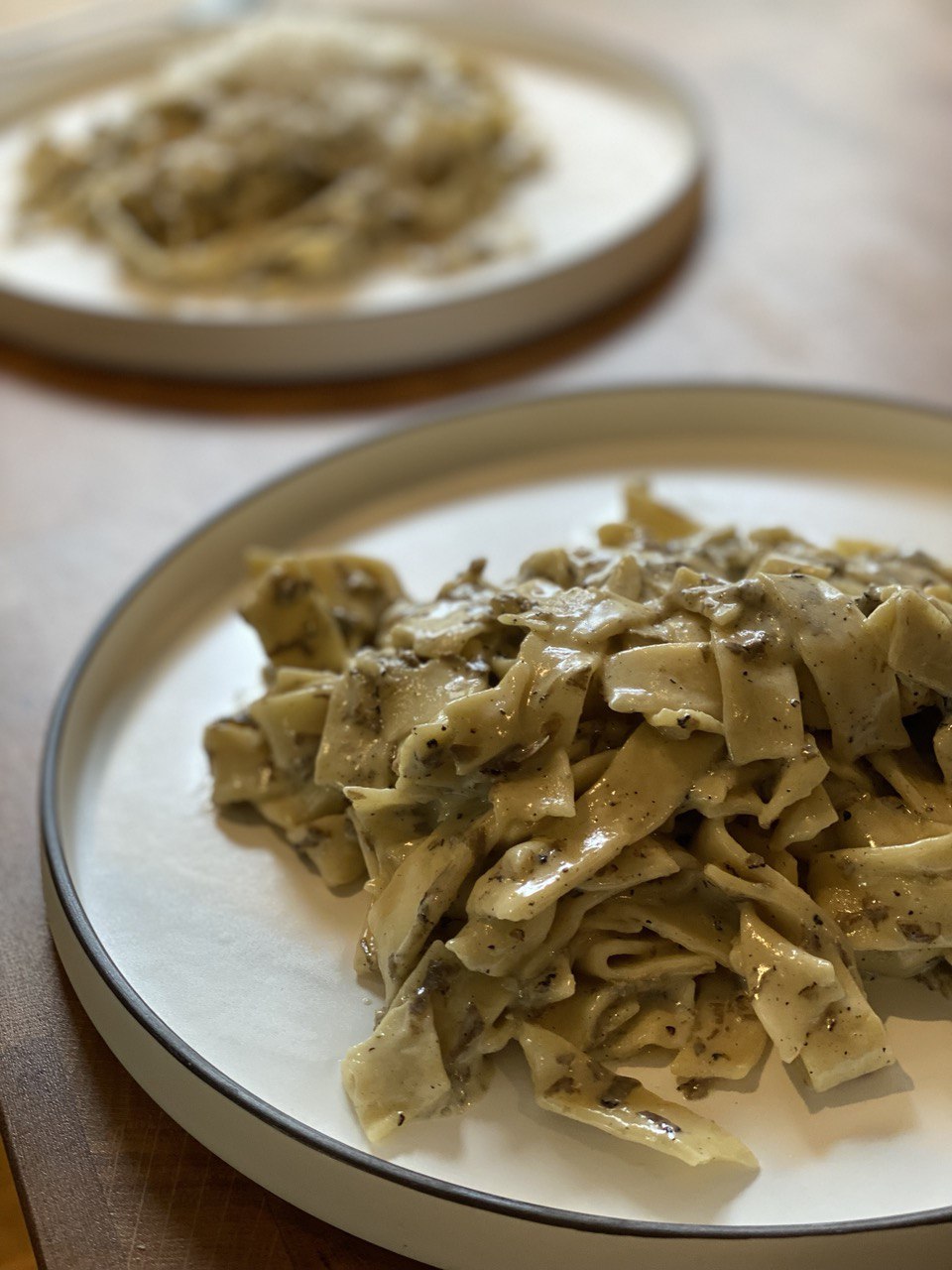
So scaling up recipes is definitely more fun than trying to make way less than they call for. At least it makes you more creative.
Things I enjoyed reading ¶
1. Coins, the Overlooked Keys to History by @cncep ¶
It's been a while since I actual dealt with coins, mostly because Apple Pay made my life singnificantly easier, but also because I offload them onto surfaces around the house the moment I come back home from some farmers' market, and pretty much never pick them back up.
It doesn't mean coins are useless these days.
Almost every civilization has had some form of currency, but coins first proliferated nearly three thousand years ago among the Lydians, in what is today modern Turkey. Called croesids, in honor of the Lydian king Croesus, these early coins were quickly copied by the Greeks, who found them easier to exchange than land, cattle, or any of the other commodities of the ancient world.
I wonder what would be a similar footprint for these decades. Some archived tweets? Forgotten blog posts?
2. The argument for switching off lights at night by Laura Paddison ¶
For a long period of my childhood I dreamt of a telescope, and was very disappointed to find out that given a city's light pollution, it is of almost no use to me.
The deaths were a catalyst for a city-wide effort to tackle the impact of light pollution on birds. In March, a coalition including the Audubon Society and the Academy of Natural Sciences of Drexel University announced "Lights Out Philly", where building owners, managers, residents and tenants agreed to turn off or dim city lights between midnight and 06:00 during key migration periods.
Seems like eventually it will be addressed all over the world, even though not because the younger me suffered of disappointment.
3. What Happens If You Stick Your Head in a Particle Accelerator? by Joel Frohlich ¶
Despite sounding like a plot twist for an upcoming Marvel movie, this question was theoretical for quite some time until it was answered with an accidental experiment.
And on July 13, 1978, a Soviet scientist named Anatoli Bugorski stuck his head in a particle accelerator. On that fateful day, Bugorski was checking malfunctioning equipment on the U-70 synchrotron—the largest particle accelerator in the Soviet Union—when a safety mechanism failed and a beam of protons travelling at nearly the speed of light passed straight through his head, Phineas Gage-style.
Won't spoil you the answer as the article is worth reading (although I don't share other articles anyway).
4. Ode to the Ice Man by messynessy ¶
A somewhat motivational lesson about a person who taught people to add ice to drinks just to make profit out of it.
But Frederic Tudor was in fact banking on it, and spent much of his energy creating more demand for his product by pretty much inventing the concept of putting ice in drinks instead of only using it for food preservation. Iced drinks were very much a novelty and initially viewed with concern by customers, who were worried about the health risks. He instructed his sales agents to give a year’s supply of free ice to bartenders at social clubs and hotels across the West Indies and the southern US states.
An ode to perseverance, not less. Also I can't really complain as ice makes all drinks better.
5. How The Flakka Drug Epidemic Nearly Drove South Florida To Madness by John Kuroski ¶
If we were to face a zombie apocalypsis any time soon, it most likely would be due to flakka going out of control.
Appropriately summarized as “excited delirium,” flakka’s physiological and psychological effects can last several days and include hallucinations, extreme agitation, increased strength, violent behavior, near-lethal blood pressure, and body temperatures of higher than 106 degrees Fahrenheit.
Pretty much checks out all Zombieland hints on this one.
6. Leap seconds: Causing Bugs Even When They Don't Happen by @PowerDNS_Bert ¶
Dealing with timestamps is painful and traumatizing, and yet dealing with timestamp exceptions is even more painful. Luckily they don't happen often, and when they do we know if beforehand, but that doesn't help much.
Now, “on Earth”, we would be transmitting the entire week number. But in orbit, space in communications comes at a premium. And since leap seconds are never known more than (say) 52 weeks in advance, the leap second message only transmits the last 8 bits of the week number in which the leap second will happen. This means that once every 256 weeks, we hit the same 8 bit week number.
Read further for a great explanation of why they could cause a bug even if they don't happen.
7. How to gain more from your reading by Robert DiYanni ¶
As you might have guessed by now, I love reading. And while reading for pleasure is often ignored by all those articles about skimming and writing summaries, I do believe that it is possible to enjoy reading even more once you start practising it.
Yet another way to heighten your reading appreciation and understanding is to read some parts of the text aloud – a sentence or even an entire page. Reading Thoreau’s sentence aloud, for example, will help you notice things you’re likely to miss during silent reading. The ear (and voice) prompt the eye to see, absorb more of the writer’s craft and art. The art of reading and the craft of writing owe as much to the ear as to the eye.
This is an interesting point: I rarely read outloud, mostly because it doesn't make sense straightaway, but the example actually checks out, so I will pay more attention to it in the future.
8. Technical blogging in the era of Stack Overflow by @ognjenio ¶
Another idea I relate to myself. These days you either make a living by blogging, in which case it doesn't matter whether someone already wrote on the topic using another platform: what matters in the end is your SEO vs their SEO, or you just honestly want to share.
In case of the latter, it is hard to write a yet-another-post on something common, given that you've already learnt it yourself from some blog post.
This is really encouraging though:
There are often situations where Stack Overflow answers offer only individual pieces of the solution and you must then piece them together to fit your use-case.
With experience, you’re better able to put those pieces together.
9. The Twopenny Hangover by Mike Dash ¶
This is like a detective work but for a word, and the author is walking through historical rumours, books, and records while explaining readers how stories get transferred through time and continents.
Thus far, you’ll note, we’ve got no further back than the 1880s, and the stories that Riis refers to can’t, so far as I have been able to establish, be traced in reports that date any earlier than that; an attempt to search for the term “twopenny hangover” in the online British Newspaper Archive, for instance, produced nothing but 1930s references to Orwell’s book.
Also the history behind the term itself is unexpectedly gripping.
10. It looks like a product but is secretly a subscription by Cal Paterson ¶
I never though of this transition from a perspective of building businesses:
The bottles are made of glass. When they are empty they are rinsed and then left out for the milkman to collect next time and so are reused. The only (recyclable) waste is the small foil cap. The milkman arrives in an special electric van called a "milk float" so if you are into your environmentalism then milk is the SaaS for you.
At some point though, milk became something your bought at the supermarket, in a disposable plastic bottle that you put in "the recycling" but the plastic is mostly not in fact recycled at all but just moved around. This makes milk an unusual case of a service turning into a product to its detriment.
Funnily enough, milkmen are still a thing in my hometown, and operate with the same model. However, for some weird historical reasons, you can subscribe to a daily milk delivery only if you have a newborn. And you will have to pick the bottles up from a station. But everything else is pretty much the same, I am honestly surprised they don't sell nappies or something. Such a missed opportunity!
Things I didn't know last Tuesday ¶
1. Dishwasher salmon ¶
I was taught that as a chef you are limited only by the number of heating surfaces you have (think stovetops, sous vides, ovens, etc).
Well, today I removed these last constraints once and for all.
Pieces of salmon are spiced and wrapped tightly in at least two layers of aluminum foil and put in a dishwasher. The dishwasher is set to perform the wash and dry cycle. Depending on the model of the dishwasher, the salmon is cooked, steamed and ripened.

I will let you know when my book "1001 Michelin dish in a dishwasher" is ready for a pre-order.
2. Beavers build dams to stop the sounds of running water ¶
Somehow I never question why beavers build what they build. Apparently I wasn't alone.
It was only when Wilsson played them the sounds of running water through a speaker that their instincts kicked in. Suddenly the beavers were compelled to start building over the speaker, convinced that it was the source of the leak. When the sound was played for them through a loudspeaker on concrete, the beavers still built their dam over the dry floor.
The most surprising part is that even in the presence of leaking water they would build the dam over a speaker, if the speaker is louder.
3. Boston Cooler ¶
A good example of how recipes change over time (also an odd recipe, but who am I to judge?).
Though the Boston Cooler—originally a cocktail of rum, lime, and soda water—was born in Massachusetts in the late 1800s, it gradually migrated and morphed across bar counters and soda fountains until it evolved into its final, frothy form: vanilla ice cream stirred in a glass of Detroit’s Vernors ginger ale until smooth.

I actually might have it tonight, but I have only ginger beer. And homemade ice creams, neither of which is vanilla.
4. Chess boxing ¶
Back then in my childhood chess players were disregarded as nerds. Wish I knew of this hybrid sport before.
Chess boxing, or chessboxing is a hybrid sport that combines two traditional pastimes: chess and boxing. Contestants compete in alternating rounds of chess and boxing.

Wonder what do they do if it's a draw?
5. Potoooooooo ¶
A beautiful name and some marvelous history:
Potoooooooo or variations of Pot-8-Os (1773 – November 1800) was an 18th-century thoroughbred racehorse who won over 30 races and defeated some of the greatest racehorses of the time. He went on to be a sire. He is now best known for the unusual spelling of his name, pronounced 'Potatoes'.

Do you think it could be used for humans as well?
6. Scunci ¶
An etymological encounter of the day, that wacky thing folks put in their hair apparently had a different name (which didn't make any sence either):
Revson named the decorative hair accessory the Scunci after her pet toy poodle. The name Scrunchie was a natural evolution, because the fabric scrunched up.

Also I didn't know it's a purely decorative accessory. It looked like it had a more important purpose.
7. Passatelli in brodo ¶
Another recipe I found in Massimo Bottura's records, which apparently is a pasta without flour:
Although passatelli is not made with flour, it is still classified as a type of pasta. These soft, normally homemade strands of breadcrumbs, grated Parmigiano cheese and eggs are an ancient tradition.
Also it is made with il ferro di passatelli which looks like a mix between a potato masher and a meat mincer:

(source: https://www.agrodolce.it/ricette/passatelli-brodo/)
8. $ ^code1^code2 ¶
So let's say you wrote a command in the terminal and made a typo:
$ echo "Hello, wrld!"
Apparently you can do ^wrld^world and it will launch the previous command but replace the mistyped word with a proper one.
$ echo "Hello, wrld!"
Hello, wrld!
$ ^wrld^world
Hello, world!How cool is that?!
9. Twitterature ¶
Not that I am surprised by a fact that people write poetry on Twitter... but if Neil Gaiman himself involves subscribers into writing interactive "twovels" with him, it must be a bigger thing than I thought:
The 280-character maximum imposed by the medium, upgraded from 140 characters in late 2017, provides a creative challenge.
Fair enough. That's why people love Twitter in the first place: it challenges them on daily basis. That's exactly what I thought.
10. The Inventor of the Black Box Was Told to Drop the Idea ¶
Another peculiar and yet motivational fact: even if your attempts to make the world a better place fail, keep trying and one day folks from another country will come over and help you to launch it into production.
He proposed an instrument that would record cockpit conversation on a closed circle of wire. To facilitate the device’s recovery after a crash, he suggested it be placed in the part of the plane least likely to receive extensive damage, namely the tail. Much to Warren's surprise, his boss hated the idea.
Did you know that now it is mandatory to have those on airplanes?
Book of the week ¶
As I mentioned in the intro to this edition, one of the dishes we cooked was based on Wylie Dufresne's signature recipe. I spotted it in his book, wd~50: The Cookbook, and while it has a plenty of recipes it also gives a great insight into his thinking and reasoning:
I thought we were just doing what so many chefs before us had done: We were taking ingredients and saying, How can we turn these into dinner? Before we were making edible eggshells and fried mayonnaise, Frenchmen labored over elaborate galantines and ballotines; they broke down beasts (and for that matter, fruits and vegetables), pulled them apart, filled them with stuffing, and stitched them back together.
Manipulating food is not a new thing. Why are there so many shapes of pasta? We all know why: because bending food to your will and your whims reflects how you see the world—and because sometimes you end up with a better-tasting end product. You can cook a whole leg of lamb by just throwing it on the coals, but if you butterfly it, stuff it, tie it back up, and cook it slowly and evenly, you get something much more delicious.
There is no ingredient better suited to manipulation than foie gras. Yes, you can simply cut it and sear it. But taking it apart and reforming it is so much more compelling. You can turn it into terrines. You can liquefy it. You can make a mousse out of it. It’s so versatile in the hands of people who appreciate it, respect it, and want to make the most of it. And it can show up in any part of the meal, from the beginning to the very end.
On the recipes themselves, in reviews lots of people complain that they're impossible to reproduce at home, which is balderdash.
These are probably the easiest molecular cusine recipes I've ever seen (looking at you, Heston) and call for ingredients you can pick up in the nearby corner shop (except, maybe, a few hydrocolloids).
However there is a chance that this is already a professional deformation (even though I am not a professional) and you should take this with a grain of salt.
Thank you and see you in a week! ¶
If you have any questions, or want to suggest a link for the next newsletter, please drop me a message on Twitter or reply to this email.
Cheers! 🍸